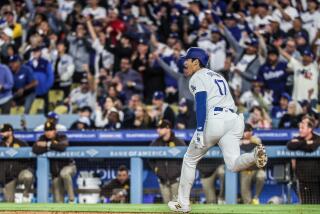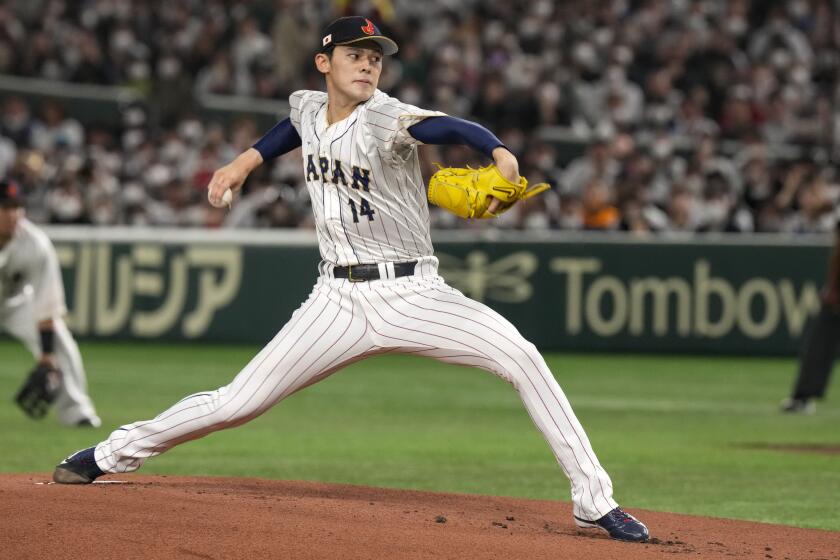Guaranteed World Series winners? Dodgers still have plenty of questions to answer
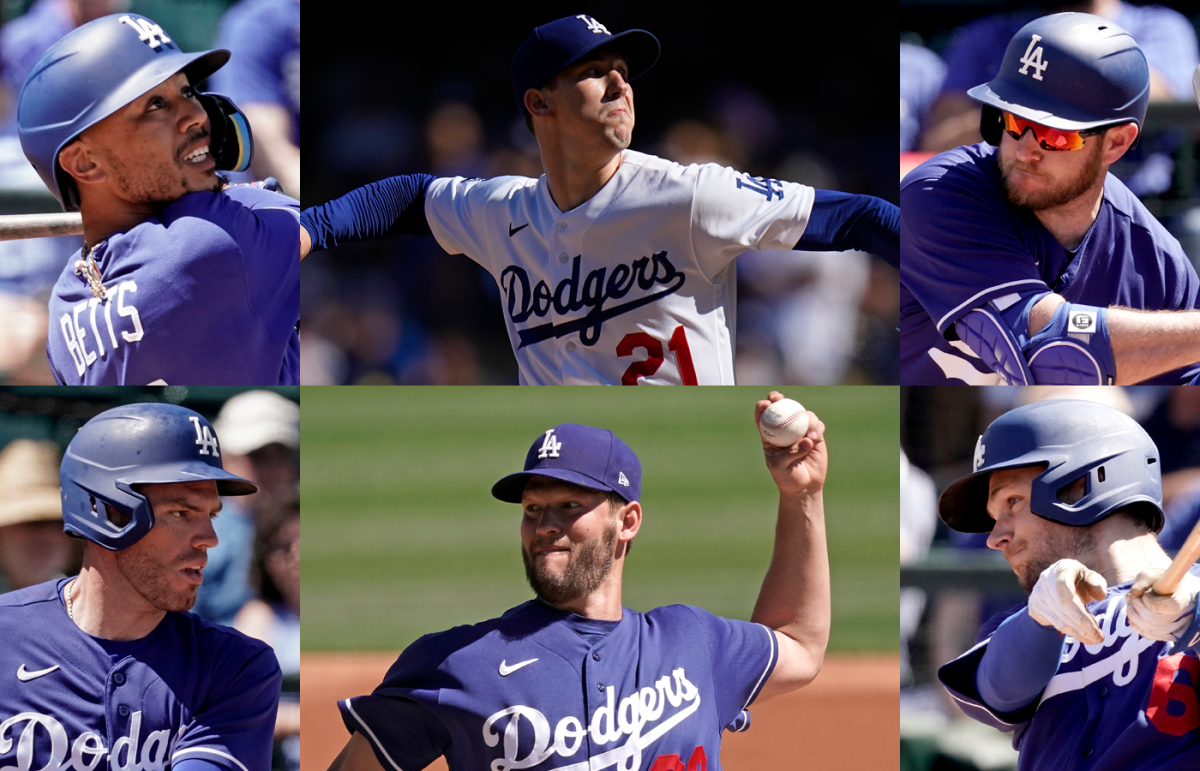
Dave Roberts grinned as he heard the names read to him.
At the top of the lineup: Betts, Freeman, Turner.
Further down the order: Smith, Turner, Muncy, Bellinger.
“Man,” the manager said, “that’s a good lineup.”
The Dodgers will need it to be this season.
At the start of a 2022 season that begins with World Series expectations and plenty of unknowns after an offseason of change, this much is clear about the Dodgers: They have arguably the best lineup in baseball and the potential to put up all-time offensive numbers. Yet they also have myriad questions on their pitching staff, making their performance at the plate all the more critical to their championship chances.
“There’s not a lot of teams that can compare to that on paper,” Roberts said.
On paper, the ceiling for their lineup seems sky high.
They have a talent pool the franchise spent years slowly collecting, with seven former All-Stars across the diamond and former MVPs in right field (Mookie Betts), center field (Cody Bellinger) and first base (Freddie Freeman).
“It’s a special group,” said Freeman, the team’s newest star addition after signing a six-year, $162-million deal last month.
It’s a deep group, too. Seven players are projected to be worth at least 2.5 wins above replacement, according to Fangraphs. The bench and minor league roster are stocked with MLB experience. There should be enough positional and platoon versatility to allow the team to exploit favorable matchups in almost any situation.
“Guys are open to different roles, different parts of the lineup, where they hit in the lineup,” Roberts said.
Almost every bookmaker and computer model has given the Dodgers the best odds to win the World Series. Roberts guaranteed a championship earlier this spring, a reflection largely of his confidence in the names he’ll write into the batting order every day.
“The lineup is as good a lineup as I have ever seen,” Roberts said. “You’ve still got to go out there and play baseball games. You’ve still got to catch the baseball. You’ve still got to pitch. That’s the great thing about our game. It’s 162 [games], but I can’t say enough about the team that we have.”
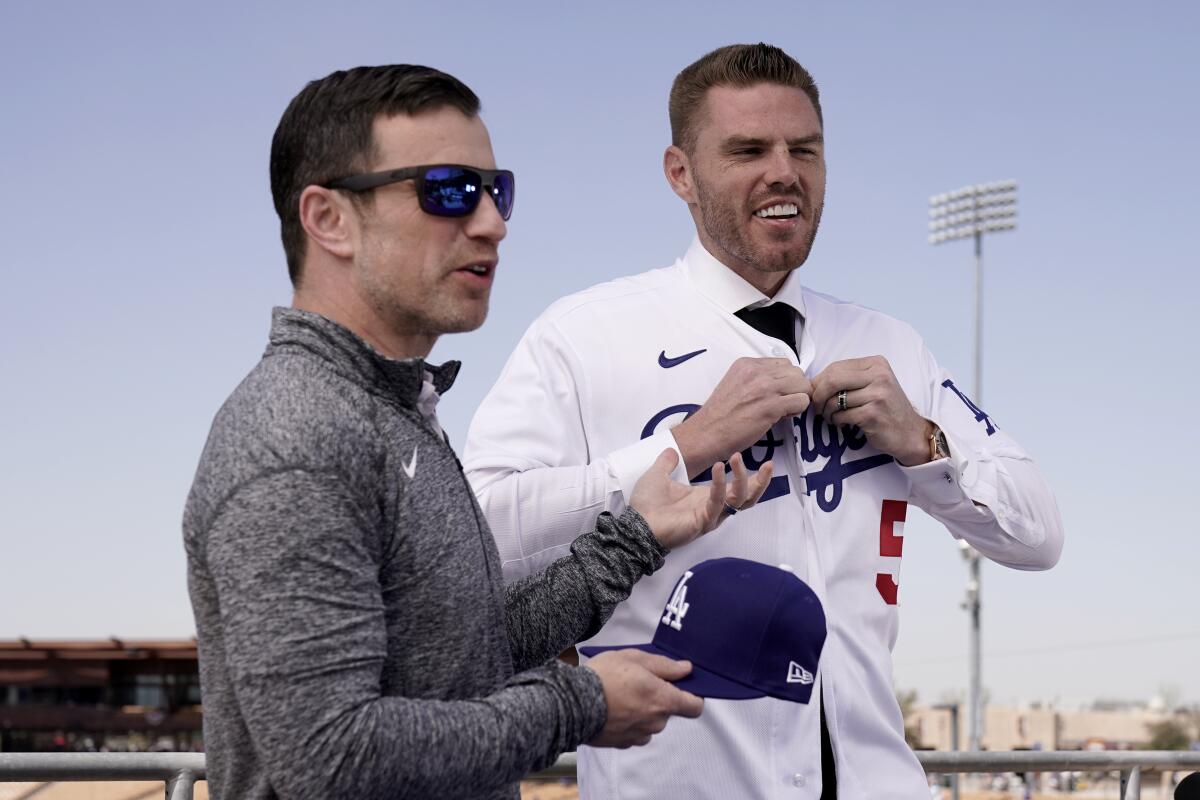
Andrew Friedman’s first Dodgers team had plenty of star power, too.
After his hiring as the club’s president of baseball operations ahead of the 2015 campaign, the Dodgers fielded a lineup that year that included eight former All-Stars, five former Silver Slugger winners, and one former MVP.
Their results, however, didn’t match their pedigree.
The Dodgers ranked in the bottom half of the majors in scoring, all while owning an MLB-high payroll with a roster built around aging veterans such as Jimmy Rollins, Carl Crawford and Chase Utley.
It cemented a realization for Friedman about the way the club would build its rosters moving forward. And it was summed up with a now-famous phrase.
“The best way to sustain prolonged success is to have financial flexibility,” Friedman said. “[That] coupled with a strong pipeline of players coming, you need at least one or the other and ideally both. So it took us time to gain that flexibility while also trying to maintain a really high level of play.”
Over the half-dozen years that followed, the Dodgers let that philosophy guide their decisions.
Over the next couple seasons, prospects Corey Seager and Bellinger exploded onto the scene as rookies of the year.
Once unheralded additions such as Justin Turner, Chris Taylor and Max Muncy — all acquired in either low-risk trades or initially on low-cost contracts — solidified the club’s depth.
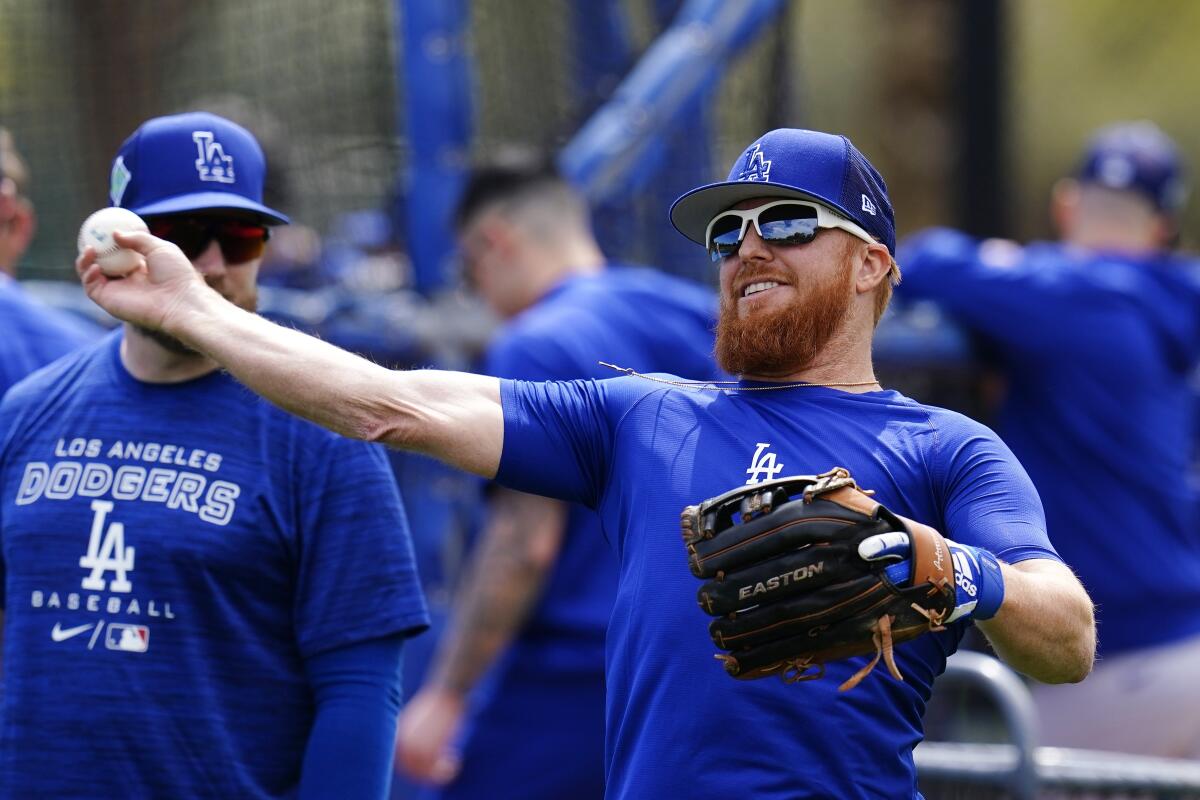
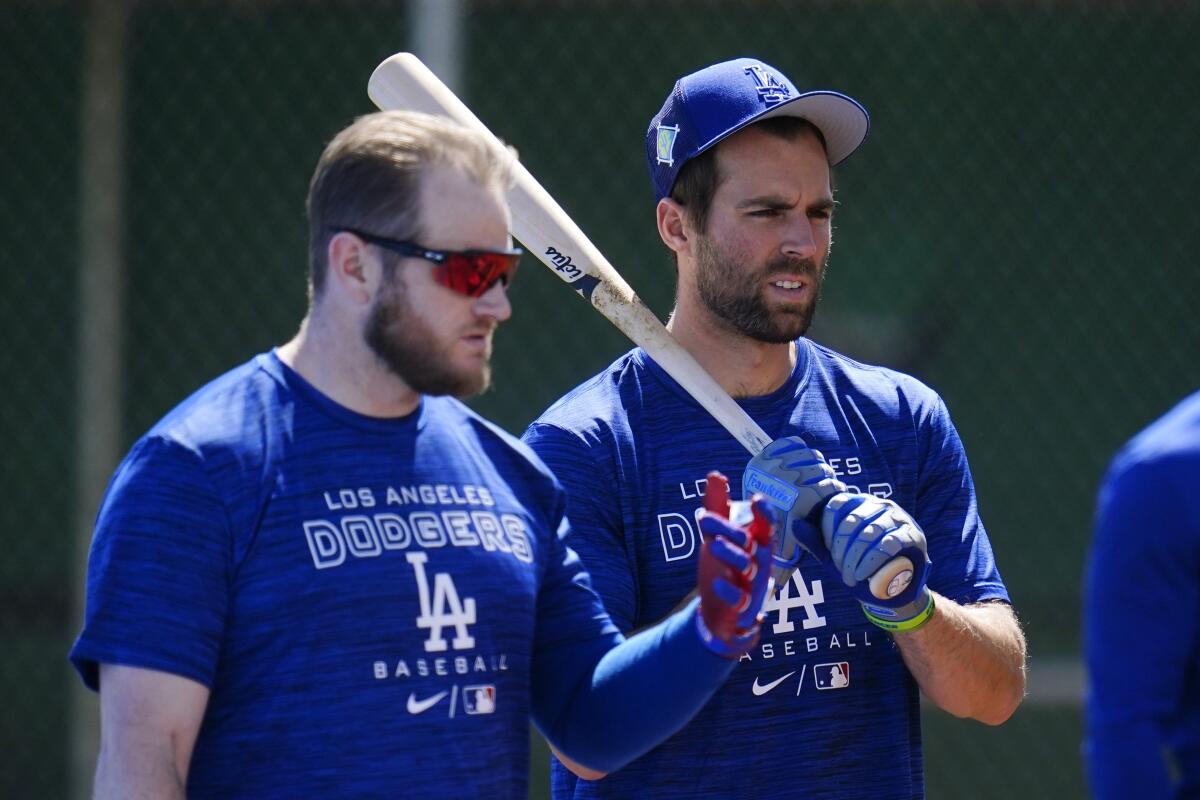
The team’s production steadily rose, improving in run production every year until they became a top-five offense in baseball in 2019 by averaging 5.47 runs per game. Meanwhile, its payroll went down, with the club getting back under MLB’s luxury tax threshold in 2018.
“The whole system is designed for teams that have had a good run of success to fall off the cliff and have to rebuild,” Friedman said. “Therefore, to counteract that, it is imperative that we’re clicking on all cylinders. Which means getting undervalued players and tapping into their potential. Having a strong pipeline of minor league players. Having our really good star players play like star players. All of it is important.”
By the start of 2020, the Dodgers finally felt they had enough resources to begin making major splashes, too. They had become a good offense without astronomical expenditure. They were ready to flex their financial muscle and put their lineup over the top.
First came the blockbuster trade and 12-year contract extension for Betts in February 2020. At last year’s trade deadline, they acquired Trea Turner in a trade with the Washington Nationals.
This spring’s signing of Freeman was the Dodgers’ biggest cannonball into the free-agent market, giving them so much offensive firepower that — even with the departure of Seager, who signed with the Texas Rangers — they felt comfortable trading outfielder AJ Pollock to the Chicago White Sox for closer Craig Kimbrel on Friday to bolster their pitching staff.
Looking back, Friedman sees it less as a culmination of a grand plan, but rather a series of moves that snowballed into an avalanche of talent.
“The decisions we chose not to make early on provided this opportunity to have the flexibility to pounce when situations popped up,” he said. “At that time we weren’t sure what that would mean, or what that would look like. In fact, two weeks ago, we didn’t think Freddie Freeman was all that viable. But it’s about being as nimble as we can be, and around the backboard on different potential moves that fit into the short-term and long-term plan.”
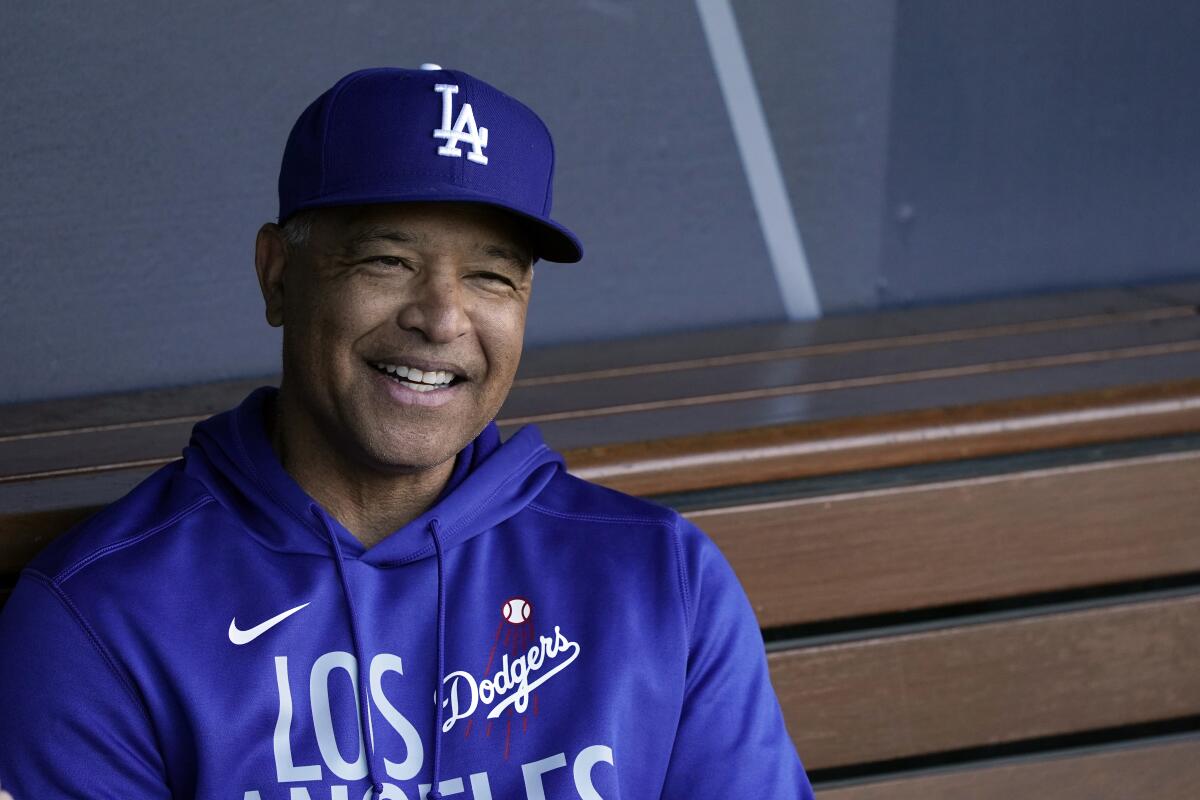
Roberts didn’t mean it facetiously.
When he looks at the Dodgers loaded lineup, he said he sees “a lot of good hitters” — meaning it as one of the highest compliments he could pay to his roster.
“By ‘good hitters,’ I mean, you can move the ball forward, you can run counts, you can take a walk, you can pass the baton, all that kind of stuff,” Roberts said. “It’s not the three outcomes that people talk about. I think the guys that we have are more guys that are good hitters.”
It’s perhaps the most enticing aspect of the Dodgers lineup. At their best, they should be able to wear down opposing pitching staffs, work deep into bullpens over the course of each series, and leave few soft spots capable of being exploited.
“Everybody in our lineup grinds at-bats,” Friedman said. “They’re aggressive on pitches in the zone. They’re passive on pitches out of zone. They can really chew up pitches and put themselves in the best position to get a mistake and capitalize.”
Over the last couple weeks, Friedman and Roberts have been bouncing ideas back and forth about the best way to utilize the group.
“You can literally argue so many different things and have a really good argument,” Friedman said. “All these guys are so talented, that you could literally do it in almost anyway and it would be really good.”
That doesn’t mean it’s a lineup without flaws or questions.
Betts is coming off an underwhelming, injury-plagued 2021 season and has been cold during spring games.
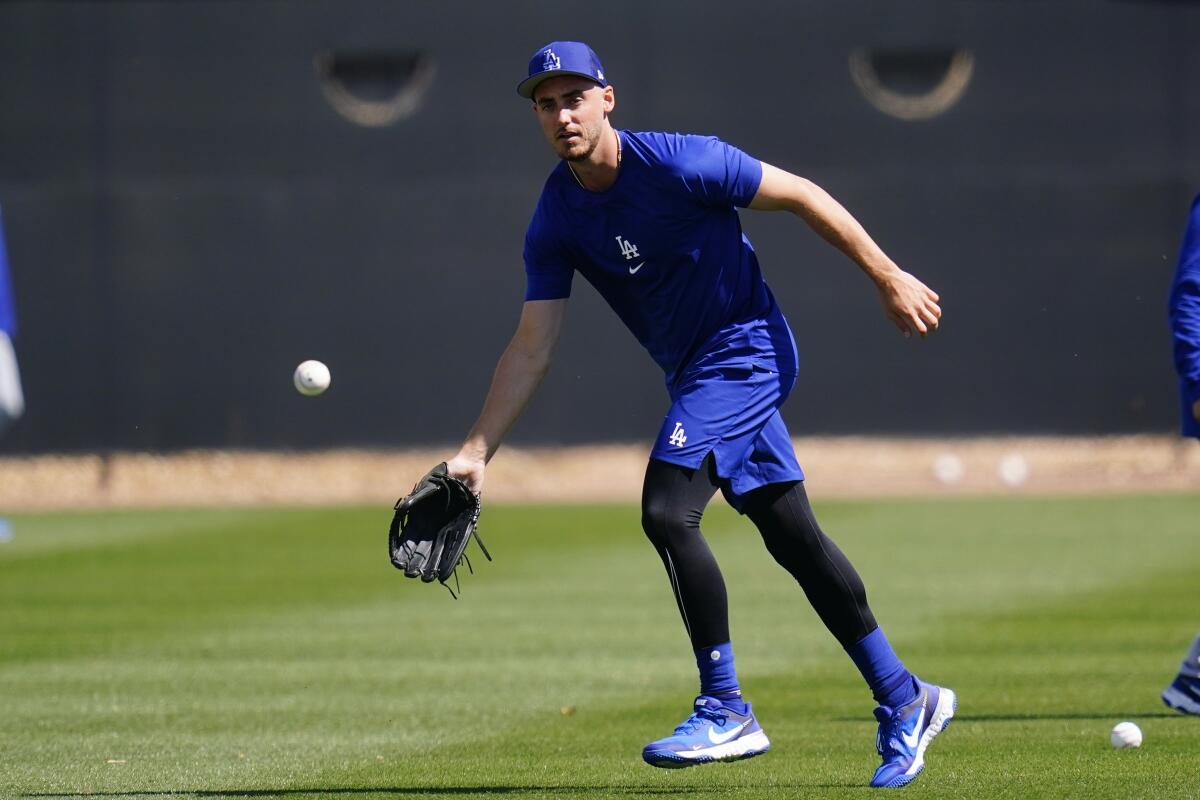
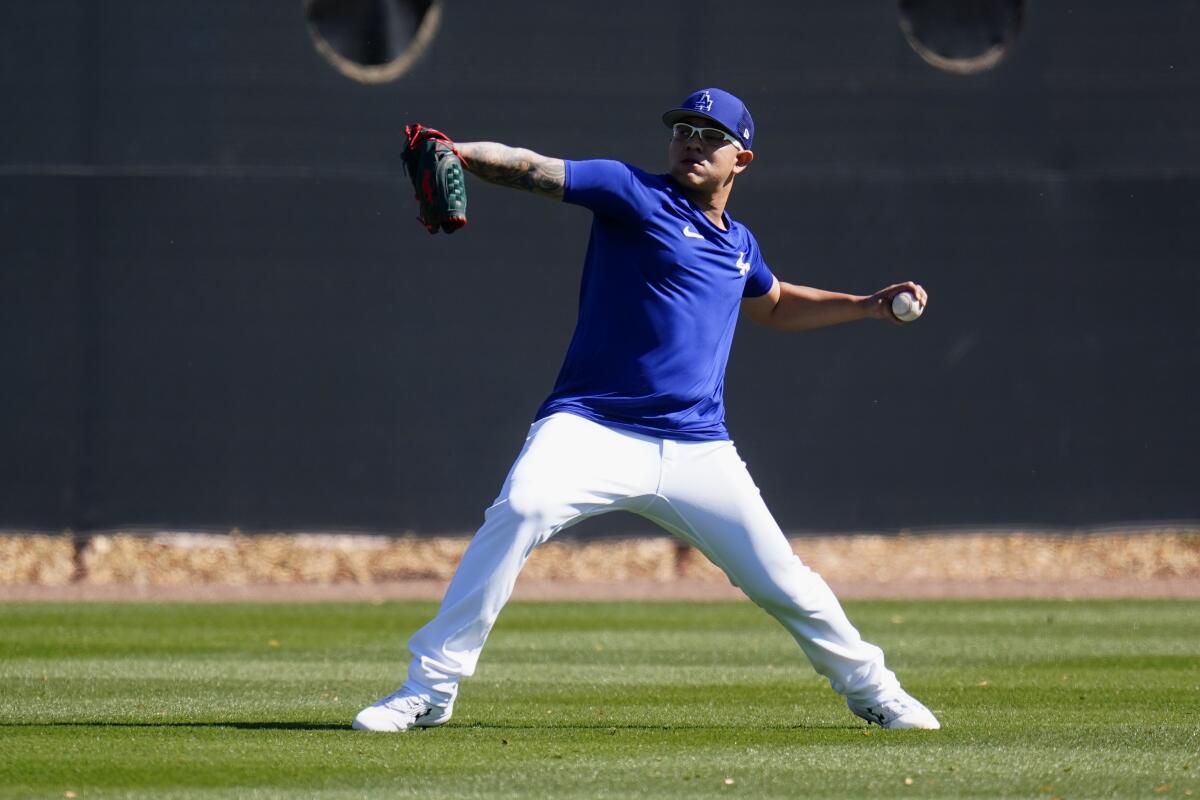
Bellinger also battled injuries during a career-worst performance a season ago, issues that don’t yet seem rectified despite a series of swing changes this spring.
Muncy is coming back from a torn ligament in his elbow that forced him to spend most of the winter rehabbing. Justin Turner and Taylor both cooled off down the stretch last season. And the loss of Pollock, who had been one of the Dodgers’ most consistent hitters over the last two seasons, leaves a hole to be filled in left field.
Yet those concerns have done little to dampen enthusiasm in the offense this spring.
Not when Freeman, Trea Turner and Betts perhaps form the most dangerous trio in baseball.
Not when catcher Will Smith, one of the few regulars without an All-Star appearance, has gone through spring looking primed for a career season.
Not when players such as Muncy, Justin Turner and Bellinger — who would be the biggest attraction on many other teams around the league — fill the middle spots of the order.
And not when, after years of patient roster construction, the Dodgers have a group seemingly capable of carrying the club to another bid for a title.
“I’m excited to look back on the season and see what this offense accomplishes,” Friedman said. “Because I think the sky’s the limit.”
More to Read
Are you a true-blue fan?
Get our Dodgers Dugout newsletter for insights, news and much more.
You may occasionally receive promotional content from the Los Angeles Times.




